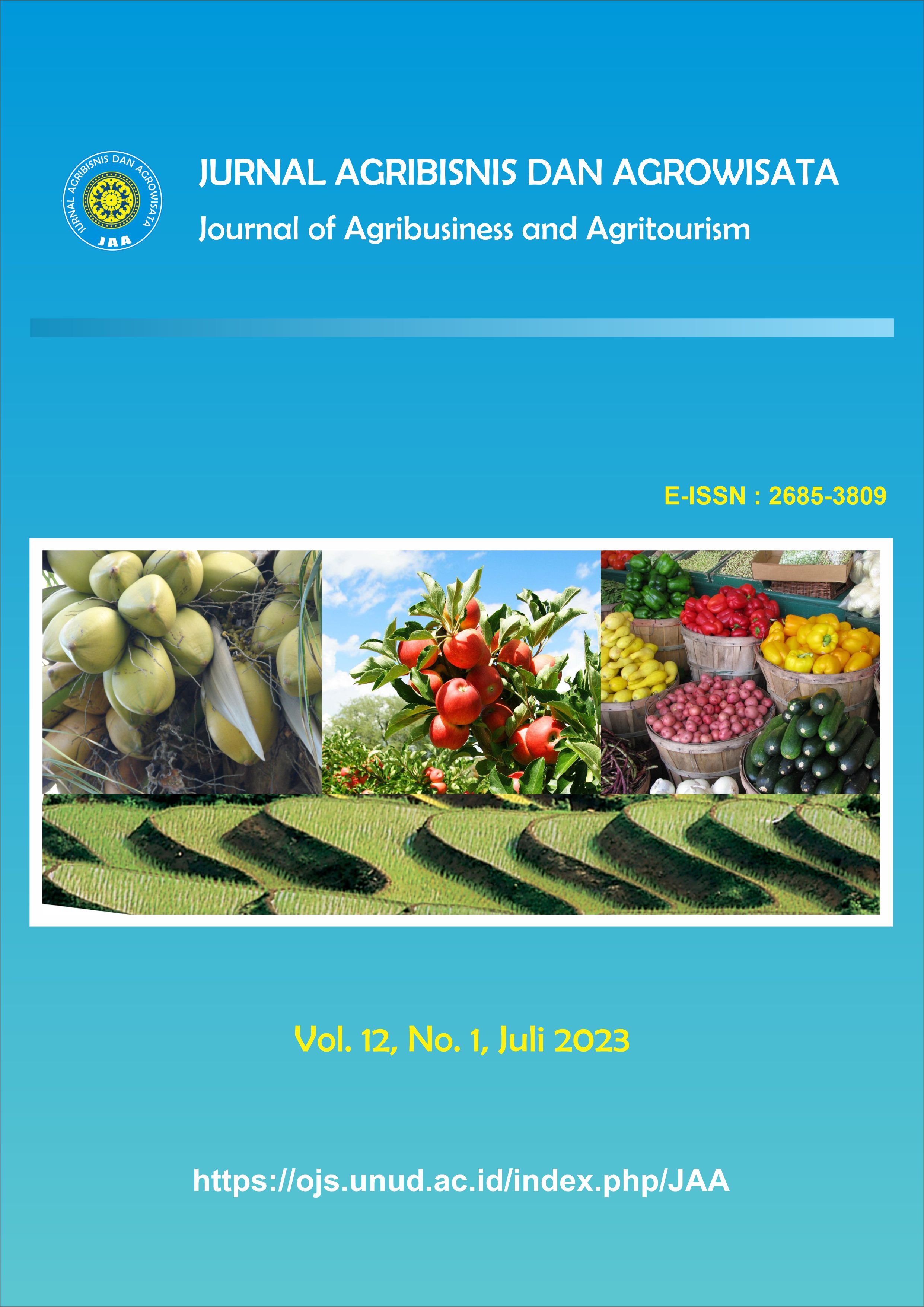Potensi Pengembangan Usaha Tanaman Hias di Desa Petiga, Kecamatan Marga, Kabupaten Tabanan
Abstract
Potensial for Developing Ornamental Plant Bussiness in Petiga Village, Marga Sub-District, Tabanan Regency
The potential for developing ornamental plant businesses in Petiga Village is certainly highly expected for business actors and the surrounding community, in addition to obtaining optimal profits, it is also expected to open up employment opportunities for the surrounding community. This study aims to determine the potential for ornamental plant business development, the characteristics of business actors, the contribution of businesses to household income, and the attitude of business actors to the benefits of ornamental plants business. This research was conducted in Petiga Village, Marga District, Tabanan Regency from June to August in 2021 with a total of 40 respondents. The analytical method used is descriptive quantitative and qualitative analysis. Based on the analysis, it shows that the age of business actors is at the productive level, dominated by male business actors, high school/vocational education level, more than 10 years of experience, the number of dependents in the family is between 3-5 people, land area is more than 10 acres, micro business category business scale, and allocation of personnel employment using labor inside and outside the family. The average income of the ornamental plant business in Petiga Village is Rp. 25,299,697/year. The contribution of ornamental plant business income to the household income of actors is 60,24%. Assessment of business actors' attitudes towards business benefits 75% of respondents are in the category of agree. So that makes the ornamental plant business has the potential to be developed.
Downloads
References
Badan Pusat Statistik. 2020. “Catalog: 1101001.” Statistik Indonesia 2020 https://www.bps.go.id/publication/2020/04/29/e9011b3155d45d70823c141f/statistik-indonesia-2020.html.
Profil Desa Petiga yang diperoleh di Kantor Desa Petiga, Kecamatan Marga, Kabupaten Tabanan pada Bulan Juli 2021.
Dany H. 2006. Kamus Ilmiah Populer. Pengertian Kontribusi.
Damiati. 2017. “Perilaku Konsumen, edisi ke-1”, PT Rajagrafindo Persada, Depok.
Direktorat Jenderal Holtikultura. 2013. Pedoman Teknis Peningkatan Produksi, Produktivitas Dan Mutu Produk Hortikultura Berkelanjutan Tahun 2014. 88.
EBK, Zameda Igga. Analisis Pendapatan Usaha Penjualan Tanaman Hias di Kota Surakarta. Agrista 7, no. 1.
Margono. 2004, Metodologi Penelitian Pendidikan, Jakarta: Rineka Cipta.
Sugiyono. 2009. Memahami Penelitian Kualitatif. Bandung: CV. Alfabeta
Widodo, Hg Susena Triyanto. 2001. Indikator Ekonomi: Dasar Perhitungan Perekonomian Indonesia. Jakarta: Kanisius







